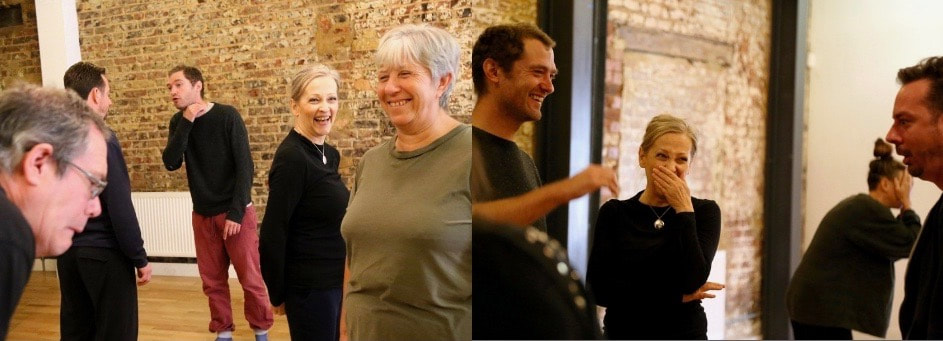It's a space to grow your confidence working in a wider emotional range, to learn comedy craft and/or to more deeply install comedy skills so that your other performance work can flourish.
It's place to open your flexibility as a performer, and give your imagination a workout.
It's place to finesse or grow audience skills - engaging, compelling and implicating your audiences while learning how to more reliably create laughter and other responses in your audiences.
We start in Clown mode to build the play and connection in the group, but also importantly in Clown mode we can cover physical, vocal and rhythmic techniques for creating, growing and building laughter. (In order to create the Troubled Laughter of the Dark Clown, we need to be able to create laughter relatively reliably).
We then move on to exercises promoting and supporting a portrayal of the Marginalised Emotions. Other exercises grow the particular flavour of audience awareness that supports the Dark Clown work (see Implicating the Audience below). Then we get to layer these elements together.
Don't worry about the terms used here - all is revealed and learned experientially step-by-step on the course!
Then we turn to the Dark Clown Scenarios. There are a growing number of Scenarios including North Korean Competitive Crying, Consumer Guilt, Body Horror, Makeup Rabbits, Somalian Pirate Hostages, Eco-Horror, The Beloved, Kidrophobia and many more.
We are aiming for what I call 'Troubled Laughter' in the audience - laughter happens but it is not a laugh at. 'Troubled Laughter' does not trivialise or dismiss the suffering. The performers (course participants) - aim to learn to implicate the audience. Done correctly, the audience laugh in a way that is either troubling or cathartic and often both at the same time.
Sometimes they veer between laughter and tears (and occasionally both at the same time).
Maybe also have a look here.







 RSS Feed
RSS Feed
